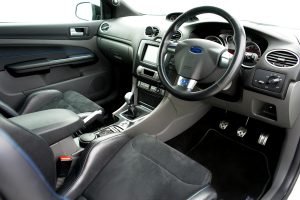Wind-Powered Vehicles: Harnessing Nature’s Energy for Transportation
When we think of transportation, we often think of vehicles powered by fossil fuels such as gasoline or diesel. However, in recent years, there has been a growing interest in alternative energy sources for transportation, with one of the most promising being wind power. By harnessing the energy of the wind, we can potentially reduce our reliance on traditional fuels and create a more sustainable mode of transportation. In this article, we will explore the concept of wind-powered vehicles and how they are being developed and utilized in today’s world.
The Basics of Wind Power
Wind power is the conversion of wind energy into a usable form, typically for electricity or mechanical power. The concept is not a new one, as wind has been used for centuries to power mills and sail ships. However, with advancements in technology, we are now able to harness the power of wind more efficiently and on a larger scale. Wind turbines are the most common method of capturing wind energy, with their large blades rotating and converting the wind’s kinetic energy into mechanical power.
The Use of Wind Power in Transportation
While wind power has primarily been used for electricity generation, there have been recent developments in utilizing wind energy for transportation. One such example is the use of wind-powered ships. These ships, known as wind-assisted or wind-assisted electric ships, use large masts with sails that can be adjusted to capture the wind’s energy and reduce the ship’s reliance on traditional fuels. This concept is particularly appealing for cargo ships, as they can travel long distances while reducing emissions and fuel costs.
A more innovative use of wind power in transportation is the development of wind-powered cars. These vehicles use wind turbines installed in the car’s body to produce electricity, which in turn, powers the car’s motor. This hybrid system reduces the car’s reliance on gasoline and can result in significant fuel savings. While these cars are still in the early stages of development, they show great potential for reducing emissions and promoting sustainability.
The Advantages of Wind-Powered Vehicles
The use of wind power in transportation offers various advantages, making it an attractive alternative to traditional fossil fuels. The first and most significant advantage is the reduction in emissions. Wind power is a clean and renewable energy source, meaning it produces no greenhouse gases or air pollutants. This makes wind-powered vehicles an environmentally friendly option, helping to combat climate change and air pollution.
Another benefit of wind-powered vehicles is their potential for cost savings. While the initial cost of implementing wind power technology may be higher, the long-term savings in fuel costs can be substantial. The cost of wind energy has been steadily decreasing, making it a more affordable option for transportation. In addition, wind-powered vehicles require less maintenance compared to traditional vehicles, resulting in further cost savings over time.
The Challenges to Overcome
Despite the advantages of wind-powered vehicles, there are still some challenges that need to be addressed. The main challenge is the variability of wind energy. Wind is not a constant energy source, and its strength and direction can vary, making it inconsistent for transportation purposes. This can be addressed through the use of energy storage systems or hybrid systems that combine wind power with other energy sources. Additionally, more research and development are needed to improve the efficiency and reliability of wind-powered vehicles.
The Future of Wind-Powered Vehicles
As the world continues to shift towards more sustainable energy sources, it is likely that wind-powered vehicles will become more prevalent in the transportation industry. Advancements in technology and increasing concerns about climate change are driving the development of these vehicles. With further research and improvements, wind-powered vehicles have the potential to become a mainstream mode of transportation, reducing our reliance on fossil fuels and promoting a cleaner, greener world.
Conclusion
Wind-powered vehicles are a promising and exciting development in the transportation industry. By harnessing the power of nature, we can reduce emissions and create a more sustainable mode of transportation. While there are still some challenges to overcome, the potential benefits make it a viable option for the future. With continued advancements and investments, we may one day see wind-powered vehicles dominating our roads and seas, creating a more environmentally friendly and efficient transportation system.











